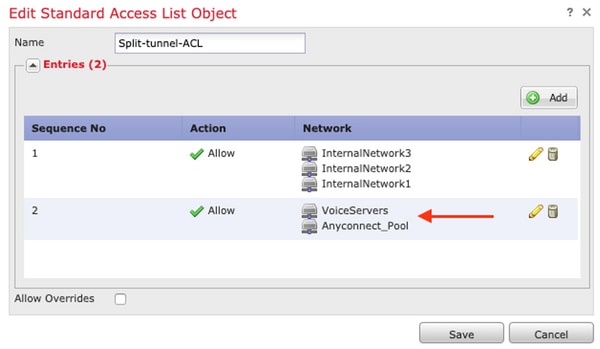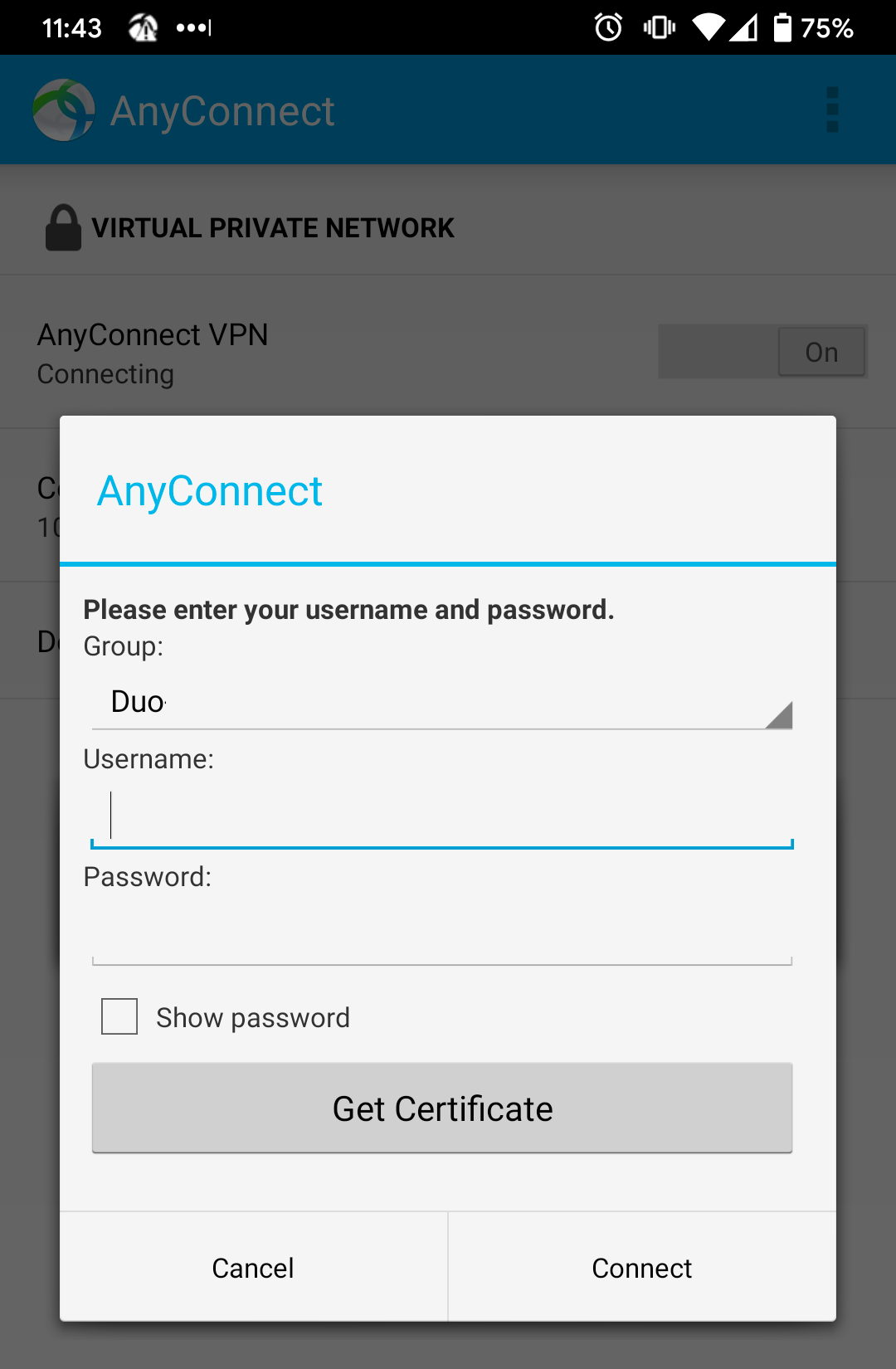Aug 02, 2019 Internet connection after installing Cisco AnyConnect I have a problem on two computers after installing Cisco AnyConnect. After the installation of Cisco AnyConnect (Windows), the configuration of the connection then after disconnection there are problems with internet connection of programs: Google FileStream, Microsoft One Drvie, Microsoft. This is completely normal behaviour for the Cisco VPN client. In fact, many workplaces absolutally DEMAND this, as their contracts may require that if a computer is on their network, then it must ONLY be on their network (and not multi-homed). Yes, there are ways around it, but you need to speak to your sysadmin about this.
- As per the suggestion, went to Control Panel- Network and Internet - Network and sharing center But could not find the Cisco AnyConnect secure mobility client connection. Here’s the message ffrom the the cisco anyconnect client ver 4.3.03xxx on Windows10 11:47:31 PM Contacting xxx country 11:47:32 PM Posture Assessment: Required for access.
- Connect with AnyConnect VPN. Search for the Cisco AnyConnect Secure Mobility Client app on your desktop (Type “Cisco AnyConnect” in your computer search bar OR select the Windows Start button and search in the menu items). Click to open the application. In the VPN pop-up window, enter: vpn.usc.edu; Then click Connect.

Overview
Stanford's VPN allows you to connect to Stanford's network as if you were on campus, making access to restricted services possible. Egyptian ak 47 serial numbers. To connect to the VPN from your Windows computer you need to install the Cisco AnyConnect VPN client.
Two types of VPN are available:
- Default Stanford (split-tunnel). When using Stanford's VPN from home, we generally recommend using the Default Stanford split-tunnel VPN. This routes and encrypts all traffic going to Stanford sites and systems through the Stanford network as if you were on campus. All non-Stanford traffic proceeds to its destination directly.
- Full Traffic (non-split-tunnel). This encrypts all internet traffic from your computer but may inadvertently block you from using resources on your local network, such as a networked printer at home. If you are traveling or using wi-fi in an untrusted location like a coffee shop or hotel, you may wish to encrypt all of your internet traffic through the Full Traffic non-split-tunnel VPN to provide an additional layer of security.
You can select the type of VPN you want to use each time you connect to the Stanford Public VPN.
Install the VPN client

- Download the Cisco AnyConnect VPN for Windows installer.
- Double-click the InstallAnyConnect.exe file.
- When a message saying the Cisco AnyConnect client has been installed, click OK.
Connect to the Stanford VPN
Cisco Anyconnect Not Connecting To Network Extender

- Launch the Cisco AnyConnect Secure Mobility Client client.
If you don't see Cisco AnyConnect Secure Mobility Client in the list of programs, navigate to Cisco > Cisco AnyConnect Secure Mobility Client. - When prompted for a VPN, enter su-vpn.stanford.edu and then click Connect.
- Enter the following information and then click OK:
- Group: select Default Stanford split- tunnel (non-Stanford traffic flows normally on an unencrypted internet connection) or Full Traffic non-split-tunnel (all internet traffic flows through the VPN connection)
- Username: your SUNet ID
- Password: your SUNet ID password
- Next, the prompt for two-step authentication displays. Enter a passcode or enter the number that corresponds to another option(in this example, enter 1 to authenticate using Duo Push to an iPad). Then click Continue.
- You may have to scroll down the list to see all of your options.
- If your only registered authentication method is printed list, hardware token, or Google Authenticator, the menu does not display. Enter a passcode in the Answer field and click Continue.
- Click Accept to connect to the Stanford Public VPN service.
- Once the VPN connection is established, a message displays in the lower-right corner of your screen, informing you that you are now connected to the VPN.
Fix 10 Common Cisco VPN Problems - TechRepublic
Disconnect from the Stanford VPN
- In the notification area, click the Cisco AnyConnect icon if it is displayed. Otherwise, go to your list of programs and click Cisco AnyConnect Secure Mobility Client.
- At the prompt, click Disconnect.




